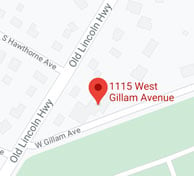When it comes to indoor air quality, most people think about pollutants like dust, allergens, and mold. However, there's a hidden danger that often goes unnoticed – carbon monoxide (CO). This colorless, odorless gas can have severe consequences for your health if not properly addressed. In this blog, we will explore the impact of carbon monoxide on indoor air quality and the importance of HVAC systems in preventing its accumulation.
Understanding Carbon Monoxide
Carbon monoxide is a byproduct of incomplete combustion of fossil fuels, such as gas, oil, and wood. Common sources include gas appliances like furnaces, water heaters, and stoves, as well as vehicles in enclosed spaces. Unlike some pollutants that cause immediate irritation, carbon monoxide is virtually undetectable without specialized equipment.
The primary health concern associated with carbon monoxide exposure is its ability to bind to hemoglobin in the blood, reducing the oxygen-carrying capacity. Even low levels of exposure can lead to symptoms such as headaches, dizziness, nausea, and fatigue. Prolonged or high-level exposure can result in more severe consequences, including unconsciousness and death.
Sources of Carbon Monoxide in Homes:
Combustion appliances
Furnaces, water heaters, stoves, and other gas appliances can produce carbon monoxide if not properly maintained or ventilated.
Fireplaces and wood-burning Stoves
Incomplete combustion in wood-burning appliances can also release carbon monoxide into your home.
Automobiles
Attached garages or parking spaces near the house can become a source of carbon monoxide if vehicles are left running in enclosed spaces.
Preventing Carbon Monoxide Buildup
Regular HVAC Maintenance
Schedule annual inspections and maintenance for your heating systems, ensuring that combustion appliances operate efficiently and produce minimal carbon monoxide.
Proper Ventilation
Ensure proper ventilation for combustion appliances. Adequate airflow helps to remove combustion byproducts, including carbon monoxide, from your home.
Carbon Monoxide detectors
Install carbon monoxide detectors on every level of your home and near sleeping areas. These devices can alert you to elevated levels of carbon monoxide, providing an early warning.
Never use generators indoors
If you have a generator, use it outdoors, away from doors and windows, to prevent carbon monoxide from entering your home.
Conclusion
Carbon monoxide is a silent threat that can compromise your indoor air quality and, more importantly, your health. Understanding the sources and taking preventive measures, such as regular HVAC maintenance and installing carbon monoxide detectors, is crucial for safeguarding your home and loved ones. By staying informed and proactive, you can ensure that your indoor air remains free from this invisible menace.





